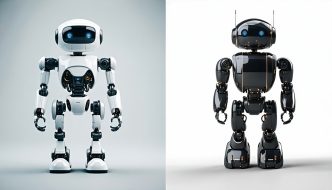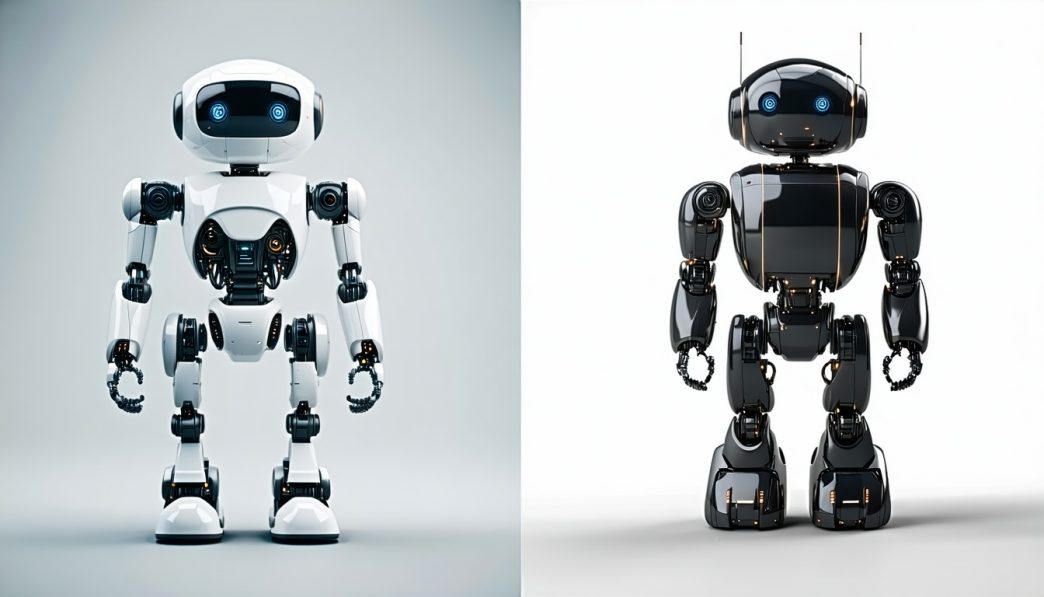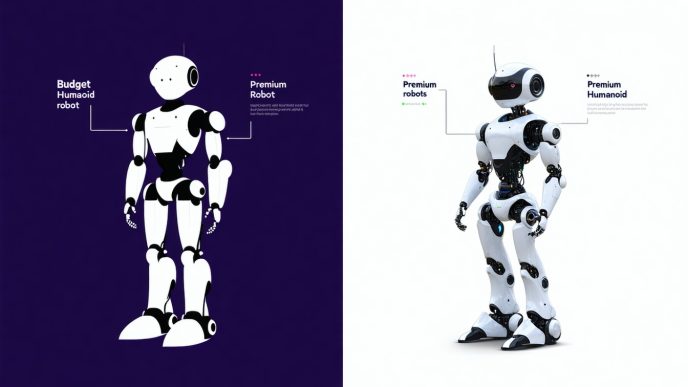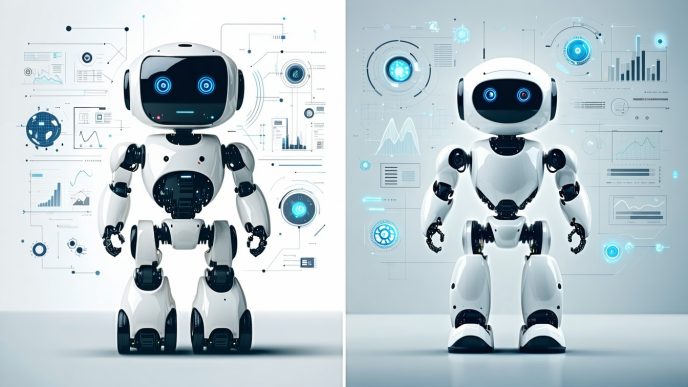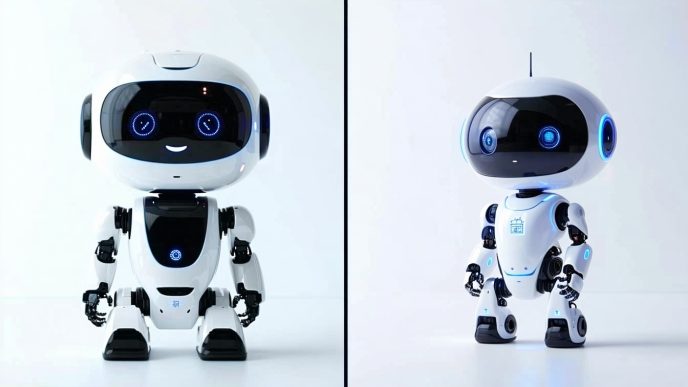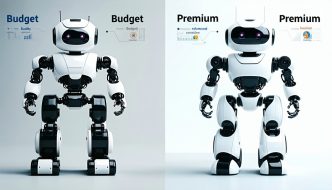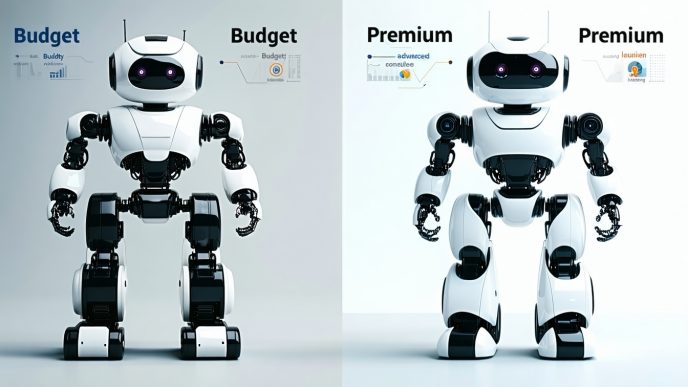Understanding Robot Upkeep and Repairs
Maintaining and repairing robots is an essential part of ensuring their longevity and performance. Understanding the significance of regular maintenance and the factors that influence repair costs can help users make informed decisions when choosing between budget and premium robots.
Importance of Maintenance
Regular maintenance is crucial for any robotic device. Neglecting upkeep can lead to reduced performance, increased wear and tear, and ultimately higher repair costs. For value-conscious buyers, investing time and resources in maintenance can extend the usability of their robots and provide long-term savings.
A well-maintained robot typically operates more efficiently, resulting in better performance and reliability. Adopting a regular maintenance schedule can prevent minor issues from escalating into costly repairs.
| Maintenance Activity | Frequency |
|---|---|
| Battery check | Monthly |
| Cleaning sensors and brushes | Monthly |
| Software updates | As needed |
| Parts inspection | Quarterly |
| Deep cleaning | Biannually |
Factors Affecting Repair Costs
Repair costs can vary significantly based on several factors. Understanding these can help users anticipate potential expenses associated with their robots.
-
Robot Type: Different types of robots have varying complexity in their designs. For instance, humanoid robots may have higher costs associated with repairs compared to simpler designs like quadruped robots.
-
Parts Availability: The availability of replacement parts can greatly influence repair costs. Budget robots may use generic parts, while premium robots often utilize proprietary components that can be more expensive.
-
Service Type: Professional repair services may charge different rates based on the robot’s brand and technology level. Some repairs can be performed by users themselves, especially for budget-friendly robots, leading to cost savings.
-
Warranty Coverage: Warranty agreements can help offset repair costs, particularly for premium models. Understanding the terms of a robot’s warranty can assist buyers in predicting future expenses.
| Repair Cost Factor | Budget Robots | Premium Robots |
|---|---|---|
| Average Repair Cost | $50 – $150 | $150 – $500 |
| Parts Replacement | Typically low-cost | Often high-cost |
| DIY Repair Potential | High | Moderate |
| Warranty Coverage | Basic | Comprehensive |
By being aware of these factors, individuals can better manage their expectations regarding robot maintenance costs when comparing budget vs premium robots. For further insights on how different robots stack up in various categories, visit our comparisons on budget humanoid robots vs premium humanoid robots and navigation systems budget vs premium robots.
Budget-Friendly Robots
When considering budget-friendly robots, it’s crucial to evaluate their typical upkeep needs as well as the common repairs that may arise. Understanding these factors can help value-conscious buyers make informed decisions about their robot investments.
Typical Upkeep Needs
Budget-friendly robots generally require less intensive upkeep compared to their premium counterparts. Maintenance tasks often include:
- Regular cleaning of sensors and brushes
- Replacing filters and dustbins
- Ensuring battery health
These upkeep tasks are essential for maintaining optimal performance and prolonging the lifespan of budget robots. Below is a table summarizing common upkeep tasks with their expected frequency and cost estimates.
| Upkeep Task | Frequency | Estimated Cost |
|---|---|---|
| Cleaning Sensors | Weekly | Minimal (DIY) |
| Replacing Filters | Every 2-3 months | $10 – $25 |
| Battery Maintenance | Annually | $20 – $50 |
Common Repairs and Costs
While budget robots are cost-effective, common repairs can still arise. Repair needs may include motor replacement, wheel repairs, or software updates. Costs associated with these repairs are typically lower than premium robot repairs but can add up. Below is a table illustrating some common repairs and their estimated costs.
| Common Repair | Estimated Cost |
|---|---|
| Motor Replacement | $50 – $100 |
| Wheel Repair | $30 – $70 |
| Software Update | $15 – $30 |
Considering the potential upkeep and repair costs is important when comparing options. For more insights on the comparisons between budget and premium robots, visit our budget vs premium robots article. By understanding these aspects, buyers can better assess their long-term investment in robotics technology.
Premium Robots
Premium robots often come with advanced features and technology, making them more sophisticated than their budget counterparts. However, these enhancements lead to specific maintenance requirements and repair costs that potential buyers should consider.
Advanced Maintenance Requirements
High-end robots typically have more complex designs and functionality, which necessitates regular and sometimes specialized maintenance. Users should expect to conduct the following upkeep tasks:
- Firmware Updates: Regular updates to the software are essential for improved performance and security.
- Component Inspections: Premium robots often include intricate sensors and mechanical parts that require routine checks to ensure optimal functioning.
- Battery Maintenance: Higher-end models may have advanced battery systems that need monitoring for performance and lifespan.
The following table outlines common advanced maintenance tasks for premium robots:
| Maintenance Task | Frequency | Importance |
|---|---|---|
| Firmware Updates | Every 6 months | Performance & Security |
| Sensor Cleaning | Monthly | Accuracy & Efficiency |
| Battery Performance Check | Quarterly | Longevity & Reliability |
High-End Repairs and Costs
While premium robots deliver enhanced performance, they can also incur higher repair costs if something goes wrong. Common repairs for these advanced models may include:
- Sensor Replacement: High-tech sensors can be more expensive to replace due to their complexity.
- Motor Repairs: Motors in premium models are often more powerful but can also be pricier to fix if they malfunction.
- Software Issues: Problems with the operating system or firmware might require professional intervention, particularly for advanced AI-driven robots.
The following table illustrates the average costs associated with high-end repairs:
| Repair Type | Average Cost | Time to Repair |
|---|---|---|
| Sensor Replacement | $150 – $400 | 1 – 2 hours |
| Motor Repair | $200 – $500 | 2 – 4 hours |
| Software Fix | $100 – $300 | 1 – 3 hours |
The maintenance and repair costs for premium robots can be significantly different from budget models. Understanding these aspects allows buyers to make informed decisions when weighing the robot maintenance costs budget vs premium. This knowledge aids value-conscious buyers in their pursuit of the best long-term investment, balancing upfront costs with quality and reliability.
Long-Term Investment Considerations
When deciding between budget and premium robots, it’s essential to evaluate the long-term investment value, particularly in terms of maintenance costs and expected lifespan. This assessment can significantly impact the overall ownership experience.
Cost of Ownership Comparison
Understanding the total cost of ownership helps potential buyers make informed decisions. Budget robots often come with lower upfront costs, but they can incur higher maintenance and repair expenses over time. In contrast, premium models can demand a higher initial investment but may offer better reliability and lower long-term upkeep costs.
Below is a comparative table showcasing typical ownership costs associated with budget versus premium robots.
| Type of Robot | Initial Cost | Annual Maintenance Cost | Common Repair Costs |
|---|---|---|---|
| Budget Robots | $200 – $500 | $50 – $100 | $100 – $200 |
| Premium Robots | $800 – $2000 | $20 – $50 | $50 – $100 |
Choosing the right robot involves not just looking at the purchase price but also factoring in the ongoing expenses related to maintenance, repair, and potential replacements. For a deeper dive into this aspect, check our article on return on investment for budget vs premium robots.
Expected Lifespan and Durability
The lifespan and durability of a robot is directly tied to its quality, which can vary significantly between budget and premium models. Budget robots typically have shorter life expectancies due to less durable components and limitations in design. They may last for three to five years with proper care.
Premium robots, on the other hand, are often constructed with superior materials and technologies, leading to an extended lifespan of six to ten years or more under similar conditions. Below is a summary of the expected lifespan for both categories.
| Type of Robot | Expected Lifespan |
|---|---|
| Budget Robots | 3 – 5 years |
| Premium Robots | 6 – 10+ years |
Investing in a premium robot might mean a higher upfront cost, but the extended lifespan could result in greater value over time. Understanding these factors is crucial for value-conscious buyers and tech enthusiasts comparing choices based on robot maintenance costs budget vs premium.
DIY Maintenance Tips
Maintaining a robot can significantly extend its lifespan and enhance performance. For value-conscious buyers and tech enthusiasts, understanding basic maintenance and troubleshooting can lead to substantial savings in robot maintenance costs, whether one opts for budget or premium models.
Cleaning and Maintenance Guidelines
Regular cleaning and maintenance are essential for keeping robots in optimal condition. Here are some basic guidelines to follow:
| Maintenance Task | Frequency | Description |
|---|---|---|
| Dust Removal | Weekly | Wipe surfaces and remove dust using a soft cloth. |
| Filter Cleaning | Monthly | Check and clean filters to ensure efficient operation. Replace if damaged. |
| Sensor Cleaning | Monthly | Use a soft, dry cloth to clean sensors for accurate functionality. |
| Battery Check | Monthly | Inspect battery health and charge cycles to ensure longevity. |
| Firmware Updates | Quarterly | Check for and install any firmware updates to improve performance. |
Implementing these maintenance tasks will help prevent potential issues and keep the robot functioning efficiently. For those interested in comparing maintenance needs in different robot categories, articles such as budget humanoid robots vs premium humanoid robots and budget quadruped robots vs premium quadruped robots may provide valuable insights.
Troubleshooting Common Issues
Even with regular maintenance, robots may encounter issues. Here are common problems and simple solutions to address them:
| Common Issue | Possible Cause | Solution |
|---|---|---|
| Robot not responding | Power loss | Check battery charge and recharge if needed. |
| Poor navigation | Dust on sensors | Clean sensors as per the guidelines. |
| Slow operation | Full memory | Clear memory by deleting unused data or programs. |
| Short battery life | Worn-out battery | Check battery health and replace if necessary. |
| Unusual noises | Mechanical blockage | Inspect for debris and clear any obstructions. |
For additional strategies on handling specific problems, readers can explore topics like navigation systems budget vs premium robots and return on investment for budget vs premium robots.
By following these DIY maintenance tips, owners can effectively manage robot maintenance costs whether they choose budget or premium options.
Professional Repair Services
Professional repair services can play a crucial role in maintaining the functionality and longevity of robots, especially when it comes to complex issues that are beyond the scope of DIY fixes. Understanding when to enlist these services can save significant time and expense.
When to Seek Professional Help
It is advisable to seek professional assistance when the robot exhibits signs of malfunction that cannot be resolved through routine maintenance or basic troubleshooting. Common indicators for professional help include:
- Repeated Errors: If the robot consistently displays error messages or fails to complete tasks.
- Physical Damage: Any noticeable damage to parts that may compromise safety or functionality.
- Performance Decline: A significant and sudden drop in efficiency or responsiveness.
- Overheating: If the device consistently overheats during operation, it may indicate internal issues.
Assessing these factors can help determine whether professional repair is necessary, especially in cases involving more sophisticated robots where safety and performance are critical. This need is even more prominent when comparing robot maintenance costs budget vs premium.
Choosing a Reliable Repair Service
Selecting a trustworthy repair service is crucial for ensuring that robots are properly maintained. Here are factors to consider when making a choice:
- Experience and Expertise: Look for services with a proven track record in repairing similar robot types.
- Customer Reviews: Reading reviews and testimonials from previous customers can provide insight into the service quality and reliability.
- Warranty and Guarantees: A reputable service will often provide warranties on their repairs, signifying confidence in their work.
- Cost Estimates: Obtain quotes from multiple repair services to compare pricing without sacrificing quality.
- Response Time: Consider the turnaround time for repairs, especially if the robot is essential for daily tasks.
By considering these aspects, value-conscious buyers can ensure that they select a service that maintains their robot’s performance, thus contributing to a better return on investment over time. For more insights on comparing robot options, explore our articles on budget humanoid robots vs premium humanoid robots and budget companion robots vs premium social robots.

